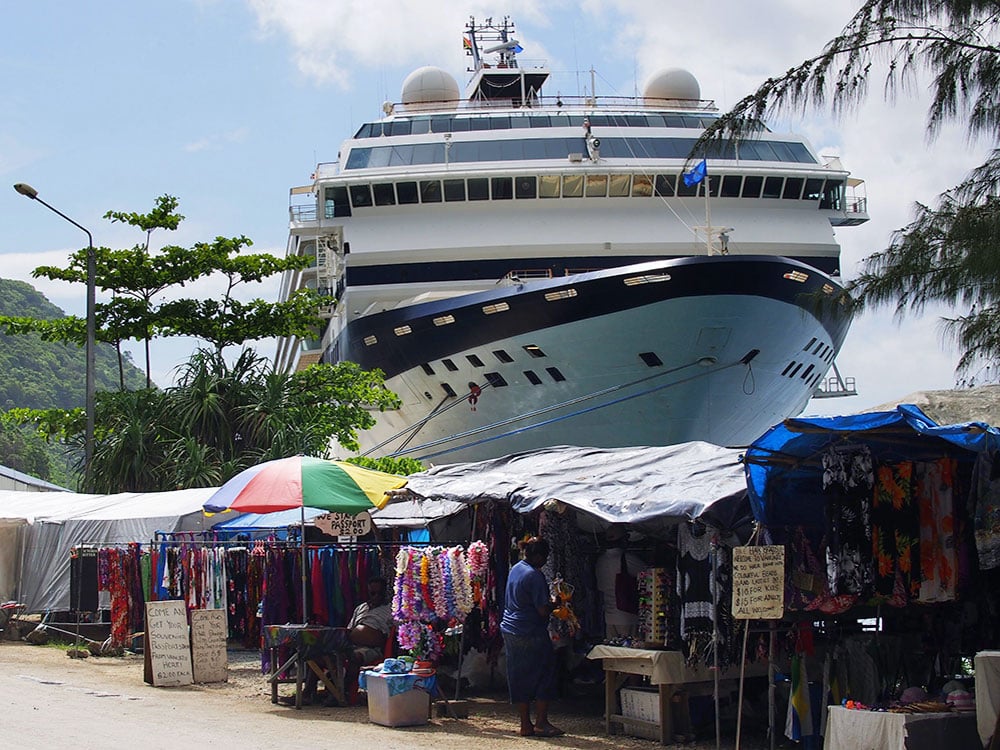Cruise ship season is officially underway in British Columbia. The season kicked off with the arrival of the Norwegian Bliss on April 3 — the first of 318 ships that are scheduled to dock in Victoria this year. Victoria saw a record 970,000 passengers arrive in 2023, with more expected in 2024.
The cruise industry was badly hit by the suspension of cruise operations due to the COVID-19 pandemic in 2020. Fuelled by heavy consumer demand and industry innovation, cruising has made a comeback. It is now one of the fastest-growing sectors, rebounding even faster than international tourism.
While many predicted a difficult recovery, a recent industry report shows a remarkable post-pandemic rebound. Two million more people went on cruises in 2023 versus 2019, with demand predicted to top 35 million in 2024.
But environmental issues plague the sector’s revival. Are they an indication of rough seas ahead? Or will a responsive industry mean smooth sailing?
Cruising has long been criticized for being Janus-faced: on the surface, cruises are convenient, exciting holidays with reputed economic benefits. But lurking underneath are its negative environmental and social impacts.
Unprecedented growth in ships and sailings
Newly constructed megaships are part of the industry’s unprecedented growth. Royal Caribbean’s Icon of the Seas is the largest cruise ship in the world, with 18 decks, 5,600 passengers and 2,350 crew.
MSC World Europa with 6,700 passengers and 2,100 crew, P&O Arvia with 5,200 passengers and 1,800 crew, and Costa Smeralda with 6,600 passengers and 1,500 crew also claim megaship status.
Those sailing to and from Alaska via Victoria will be some of the estimated 700,000 passengers departing Seattle on massive ships three sport fields in length.
Baby boomers represent less than 25 per cent of cruise clientele. Gen X, millennials and gen Z have more interest than ever in cruising, with these younger markets being targeted as the future of cruise passengers.
The Cruise Lines International Association asserts that 82 per cent of those who have cruised will cruise again. To entice first-timers and meet the needs of repeat cruisers, companies are offering new itineraries and onboard activities, from simulated skydiving and bumper cars to pickleball and lawn bowling.
Solo cruise travel is also on the rise, and multi-generational family cruise travel is flourishing, explaining the extensive variety of cabin classes, activities and restaurants available on newly constructed and retrofitted ships.
However, only a few cruise ports are large enough to dock mega ships. Cruise lines are responding by offering off-beat experiences and catering more to the distinct desires of travellers.
In doing so, there is a move towards smaller vessels and luxury liners, river cruises and expedition cruising. Leveraging lesser-known ports that can only be accessed via compact luxury ships offers more mission-driven, catered experiences for the eco-minded traveller.
The environmental costs of cruising
Cruise ship visitors are known to negatively impact Marine World Heritage sites. While most sites regulate ballast water and wastewater discharge, there are concerns about ship air emissions and wildlife interactions.
Cruise ship journeys along Canada’s west coast, for example, are leaving behind a trail of toxic waste. A study by environmental organization Friends of the Earth concluded that a cruise tourist generates eight times more carbon emissions per day than a land tourist in Seattle.
Also, a rise in expedition cruising means more negative impacts (long-haul flights to farther ports, less destination management in fragile ecosystems, last-chance tourism) and a rise in carbon dioxide emissions.
Toxic air pollutants from cruise ships around ports are higher than pre-pandemic levels, leaving Europe’s port cities “choking on air pollution.” Last year, Europe’s 218 cruise ships emitted as much sulphur oxides as one billion cars — a high number, considering the introduction of the International Maritime Organization’s sulphur cap in 2020.
Rough seas ahead or smooth sailing?
Royal Caribbean said its Icon of the Seas is designed to operate 24 per cent more efficiently than the international standard for new ships. International Maritime Organization regulations must be 30 per cent more energy-efficient than those built in 2014.
But despite the industry using liquefied natural gas instead of heavy fuel oil and electric shore power to turn off diesel engines when docking, industry critics still claim the cruise sector is greenwashing. As a result, some cities like Amsterdam, Barcelona and Venice are limiting or banning cruise ships.
Environmental critiques remain strong, especially for polar expeditions. The industry must respond and increase sustainability efforts, but their measures remain reactive (i.e., merely meeting international regulations) rather than proactive.
In addition, by sailing their ships under flags of convenience, cruise companies evade taxes and demonstrate an unwillingness to abide by a nation’s environmental, health and labour regulations.
In any case, environmental concerns are escalating along with the industry. Travel agents and industry figures are aware of these impacts and should help promote cruise lines that demonstrate a commitment to sustainable practices.
Local residents need to expect more from port authorities and local governments in order to cope with cruise tourism. Cruise consumers should recognize the environmental costs of cruising, and demand accountability and transparency from cruise lines.![]()
![]()
Read more: Travel
















Tyee Commenting Guidelines
Comments that violate guidelines risk being deleted, and violations may result in a temporary or permanent user ban. Maintain the spirit of good conversation to stay in the discussion and be patient with moderators. Comments are reviewed regularly but not in real time.
Do:
Do not: